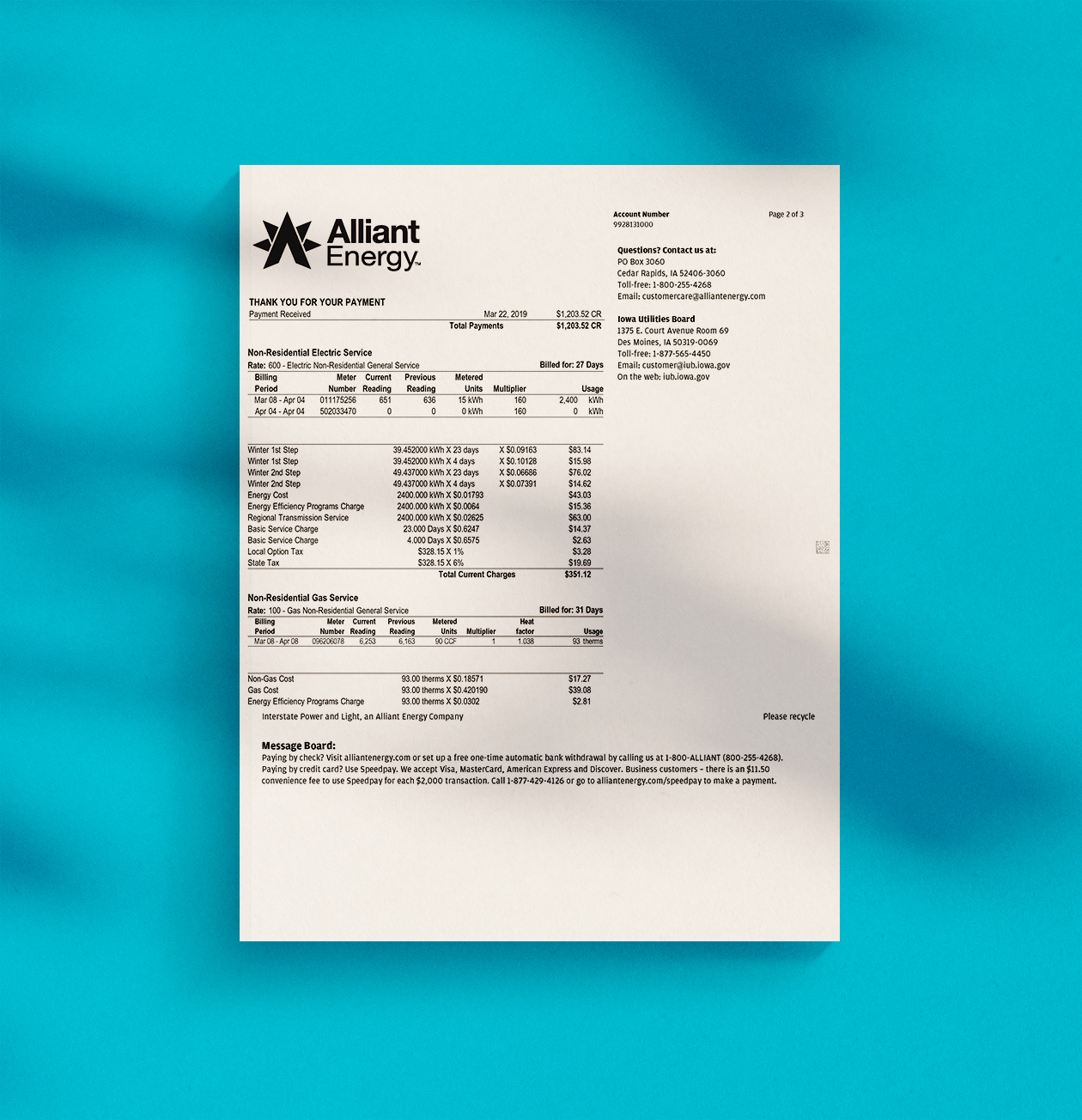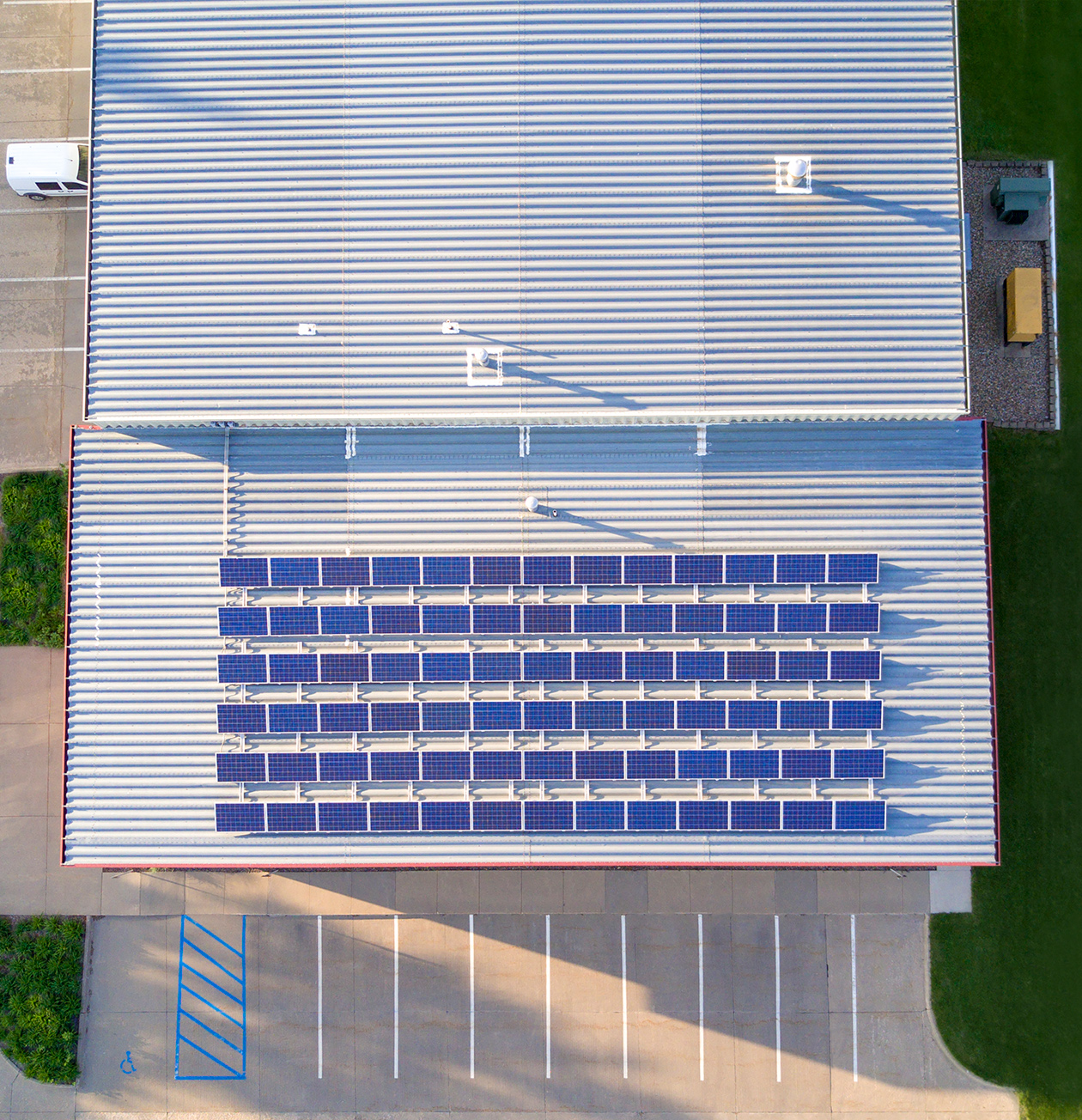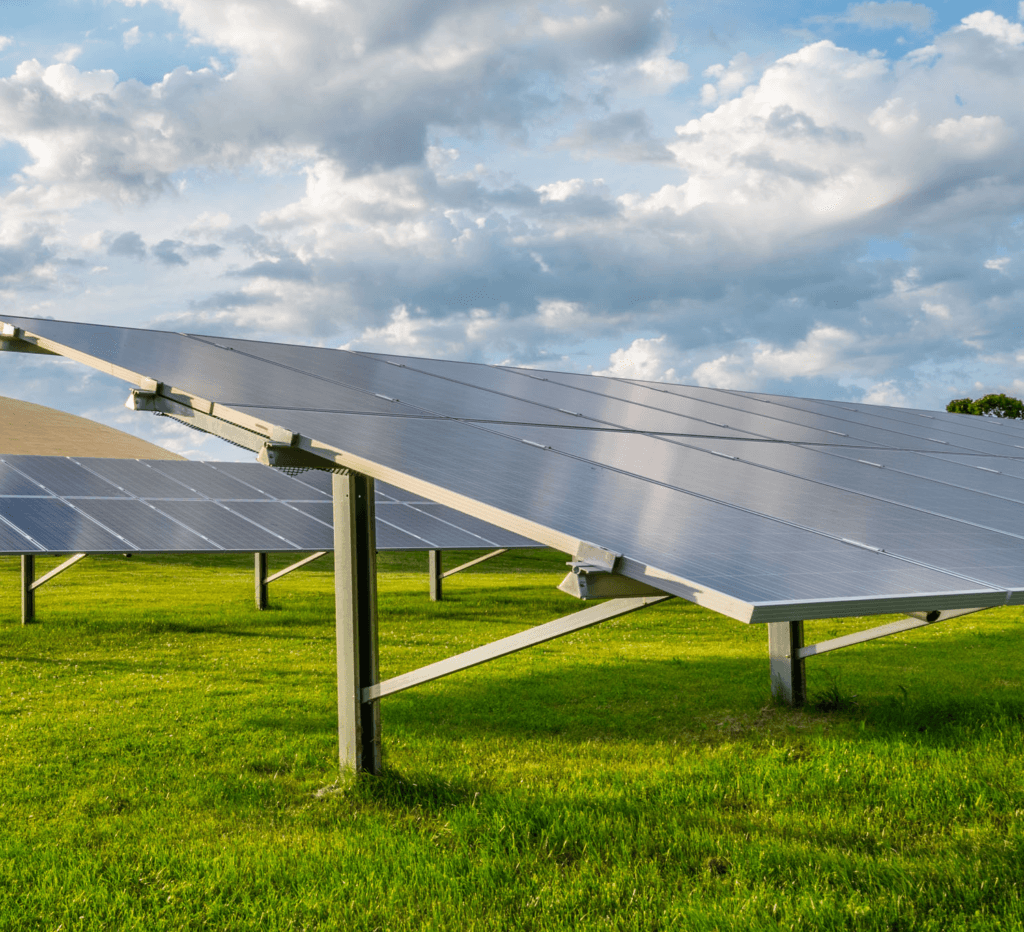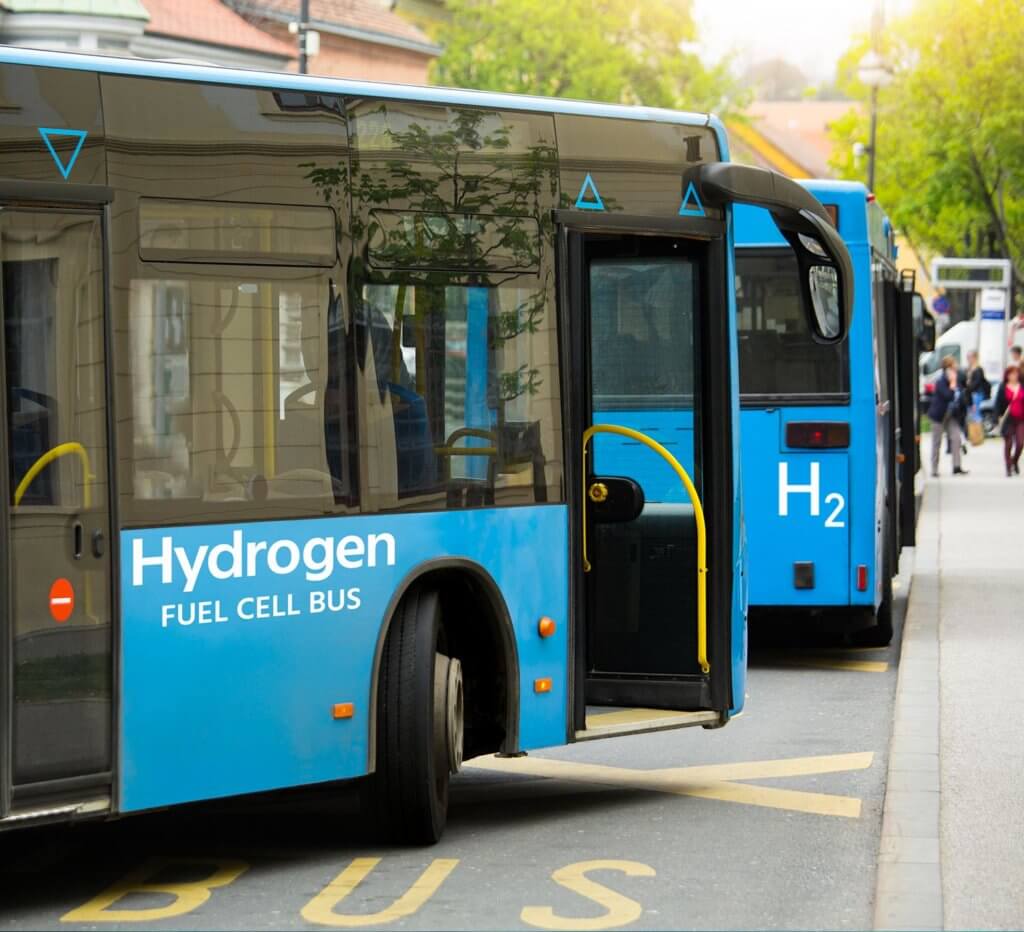In this article we cover:
Having trouble understanding your utility bills? Here’s our helpful guide to demystifying your utility electrical charges.
Utility bills can be complex, especially for large electric users. You may be wondering how utility bills are calculated.
Our guide breaks down the anatomy of a utility bill and covers tariffs, demand charges and more. The key to controlling energy costs starts with understanding your charges. We can help you identify areas where savings are possible and implement a plan that gives you the power to control your energy costs.
Tariffs
Utility bills are built around tariffs. A tariff defines the billing structures, electric rates, and other charges that combine to form a bill.
BILLING STRUCTURES
Customers pay for electricity in one of two ways: consumption, measured in kilowatt-hours (kWh); and demand, measured in kilowatts (kW). Consumption, also called usage, is the amount of energy used in each billing cycle. Demand, also called load, refers to the rate at which energy is used at any given moment. Customers on demand charge tariffs pay for the highest rate of energy use they reach – the peak demand ¬– in each billing cycle.
Consumption and demand are linked, but they don’t increase or decrease in tandem. Let’s say Customer A uses one light bulb 24 hour a day and Customer B uses two light bulbs 12 hours a day. They will both have the same consumption at the end of the month, but Customer B will have twice the peak demand of Customer A.
Most residential customers only pay for consumption. Most commercial customers pay for both demand and consumption.
ELECTRIC RATES
The U.S. Energy Information Administration’s (EIA) Electric Power Annual 2017 lists the average electricity consumption rates in 2017 as $0.1289/kWh for residential customers, $0.1066/kWh for commercial customers, and $0.688/kWh for industrial customers. Those are average rates, however; different billing structures complicate the picture.
The EIA doesn’t collect or publish demand charge data, but the National Renewable Energy Laboratory (NREL) OpenEI Utility Rate Database (URDB) makes it possible to see tariff details, including demand charge rates, for any location in the U.S.
OTHER CHARGES
Other charges consist of taxes, fixed costs like connection fees or delivery fees, and any additional fees, such as for public street lighting.
Consumption Charges
Consumption-only tariffs usually use flat, tiered, or time-of-use billing structures. With each of those billing structures, the customer pays for the kilowatt-hours of electricity used in each billing cycle.
FLAT BILLING
With flat billing, which is common in residential tariffs, there is only one rate for all consumption, regardless of time of time day or total amount of usage. For example, $0.10/kWh.
Some utilities charge a different flat rate in summer than during the rest of the year, but those seasonal price differences are usually the only variation on top of flat billing.
TIERED BILLING
With tiered billing there are two or more rates for different usage amounts. The first several hundred kWh are billed at one rate, the next several hundred kWh are billed at another rate, and so on. Some utilities charge less as usage increase, while others charge more.
Here’s an example of a typical tiered billing structure with three tiers that decrease in price with increasing usage.

In the example above, price decreases with increasing usage, but some utilities charge more with increasing usage. That might seem counterintuitive because we’re accustomed to paying less when we buy in bulk. The reason rates sometimes go up with increasing usage is because utilities often want to disincentivize usage that exceeds their baseload generation capacity, which would force them to either turn on peaking power plants or buy energy on the spot market.
There may also be seasonal variations overlaid on these tiers. For example, there might be three cheaper tiers during most of the year and one more expensive tier during the summer months.
TIME-OF-USE-BILLING
With time-of-use billing there are two or more rates depending on the time of day when electricity is consumed. The utility will define on-peak and off-peak times based on how much demand occurs during those times. On-peak times usually coincide with high air-conditioning loads from mid-day through late-afternoon, but they may start in the morning or extend into evening. Customer are charged a higher rate during on-peak times.
For example, a utility might define on-peak as 10:00 AM to 8:00 PM and off-peak as the rest of the day. In this example, the electric rates might look like this:

This is an example of a straightforward time-of-use structure, but they can be more complex. Some utilities define additional peak levels, like mid-peak and critical peak. The on peak window may be different during summer and winter, or during weekdays and weekends.
Time-of-use billing is common in commercial and industrial tariffs, but also used by some utilities in residential tariffs. Time-of-use billing is growing increasingly popular among utilities to recover costs as more and more customers use distributed generation solar to reduce their utility expenses.
COMBINATIONS & SEASONAL CHARGES
These billing structures can become much more complicated. Utilities may combine tiered and time-of-use billing, for example. It’s also common to have seasonal variations overlaid on any of these billing systems. Even flat billing could have two different rates for winter and summer.
Demand Charges
Demand charge billing is different. With demand charge billing the customer pays for the highest power load reached – the peak demand. Peak demand is defined as the highest average load during a peak demand interval (usually 15 minutes) in each billing cycle.
The actual demand charge is calculated by multiplying the peak demand rate by the peak demand. For example, if a customer hits a peak load of 150 kW during a particular month, and the demand fee is $10/kW, then the demand charges for that month are $1,500.
CONSUMPTION
Customers with demand charge billing structures pay for consumption, too. Those consumption charges are usually flat or tiered. The consumption electric rate is usually very low compared to the rates in consumption-only tariffs. As noted above, the nationwide average consumption electric rate for industrial customers is about half the average for residential customers.

Demand charge billing is different. With demand charge billing the customer pays for the highest power load reached – the peak demand. Peak demand is defined as the highest average load during a peak demand interval (usually 15 minutes) in each billing cycle.
The actual demand charge is calculated by multiplying the peak demand rate by the peak demand. For example, if a customer hits a peak load of 150 kW during a particular month, and the demand fee is $10/kW, then the demand charges for that month are $1,500.
The demand charge part of the bill can easily overshadow the consumption part. Two customers with the same overall consumption could have very different bills depending on the size of their peak loads and when they occur.
RATCHET CLAUSES
Some demand charge tariffs contain a ratchet clause. Ratchet clauses impose a minimum demand charge throughout the year based upon the highest peak demand reached all year. Ratchet causes can make demand charges even more significant, particularly for customers with seasonal load profiles.
For example, a ratchet clause might charge a customer 75% of their overall annual peak every month of the year. If that customer hit 100 kW peak demand in July, they would be charged for at least 75 kW of demand during the other 11 months of the year regardless of how high their peaks actually are during those months.
VARIATIONS
To further complicate matters, some demand charges are themselves structured as tiered or time-of-use charges. So a demand charge tariff could contain, for example, a tiered consumption billing structure and a tiered demand billing structure.
Controlling Your Electrical Costs
Understanding how utility bills are put together can allow customers to make informed decisions about how best to control costs.
In some cases, this can be quite straightforward. If a household is on a flat billing structure with a higher price in summer, than perhaps something as simple as a smart thermostat to control the air conditioner would have a substantial impact on that household’s utility bills.
Some utility bills can be surprisingly complex, however, particularly for commercial or industrial customers. If a demand charge tariff contains tiered consumption charges with multiple levels, as well as tiered demand charges with a ratchet clause, it would be extremely difficult for a business to verify the measurements and calculations behind its bill, let alone identify strategies to control costs.

That expertise – measuring consumption and demand, studying the structure of tariffs, and matching solutions to business problems – is exactly what Ideal Energy offers. We identify areas where savings are possible and design and implement solar or solar + storage systems to maximize return on investment.








